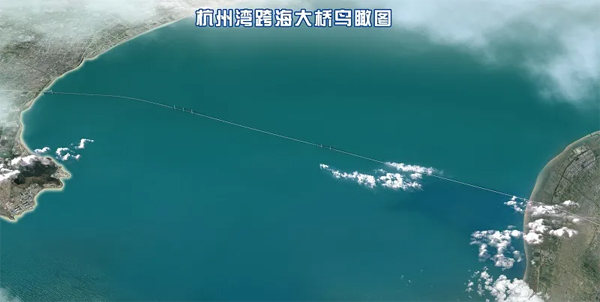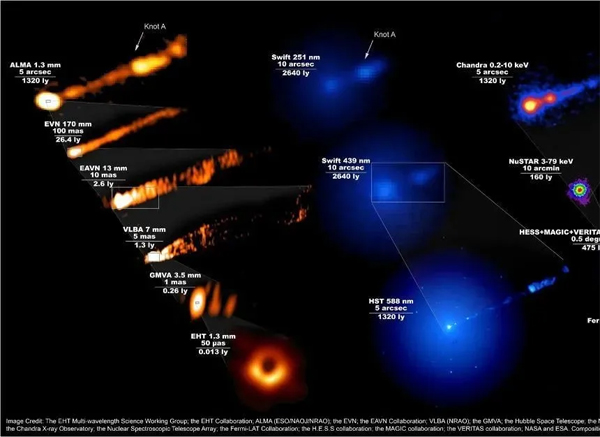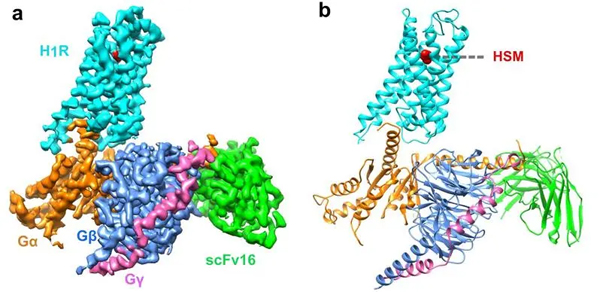1. Survey work done for Hangzhou Bay railway bridge
The offshore exploration work for the planned Nantong-Suzhou-Jiaxing-Ningbo High-speed Railway cross-sea bridge over Hangzhou Bay, one of the world's major tidal bore areas, was completed on April 13, two and a half months ahead of schedule.
The bridge is said to be the world's longest high-speed, cross-sea bridge, with the highest design standards and a top speed of 350 kilometers per hour.

The planned cross-sea bridge over Hangzhou Bay. [Photo/WeChat account: szchtf]
2. New data on black holes released
New data on black holes, observed by 19 telescopes/telescope arrays around the world, were released in The Astrophysical Journal Letters on April 14. This was the most synchronized observation to date, with the widest coverage of a supermassive black hole and its jet-flow frequency.
According to Zhao Shanshan from the Shanghai Astronomical Observatory of the Chinese Academy of Sciences (CAS), measuring the size and shape of a black hole's shadow can be used to test Einstein's general theory of relativity.

New data on black holes are released on April 14. [Photo/WeChat account: szchtf]
3. China releases lunar sample data online
The China National Space Administration has released an online database of information relating to the first batch of the lunar samples brought back by the Chang'e-5 probe.
Following the release of the database on April 13, researchers and the public can access the Lunar and Deep Space Exploration Scientific Data and Sample Release System via the China's Lunar and Deep Space Exploration website, where they can apply for data and samples.
The Chang'e-5 probe, which returned to Earth on Dec 17, 2020, retrieved a total of 1,731 grams of lunar samples, mainly rocks and soil from the lunar surface.
4. Chinese scientists make breakthroughs in life sciences
The He Yuanzheng research group from the Center for Life Sciences at the Harbin Institute of Technology (HIT) has, for the first time, analyzed the structure of the human histamine receptor complex (1/Gq) by using cryo-electron microscopy, and located the ligand histamine in the active pocket of human histamine receptor 1 protein.
Relevant research results were recently published in the international journal Nature Communications, and will provide an important basis for the development of new drugs for allergic diseases.

Chinese scientists make breakthroughs in life sciences. [Photo/WeChat account: szchtf]
5. Free-space time-frequency transmission is realized
Pan Jianwei and his colleagues from the University of Science and Technology of China recently completed a long-distance, high-loss, free-space and high-precision time frequency transfer experiment.
The issues that arise in the high-precision time-frequency transmission of high orbit satellites, such as atmospheric noise, link loss and transmission delay effect, were simulated in multiple ways. This verified the feasibility of time-frequency transmission between satellite and earth with E-18 magnitude stability in 10,000 seconds, based on medium and high orbit satellites.
The experiment lays a foundation for the future scientific experiments of space optical frequency standards and the frequency transmission and comparison of intercontinental optical clocks.